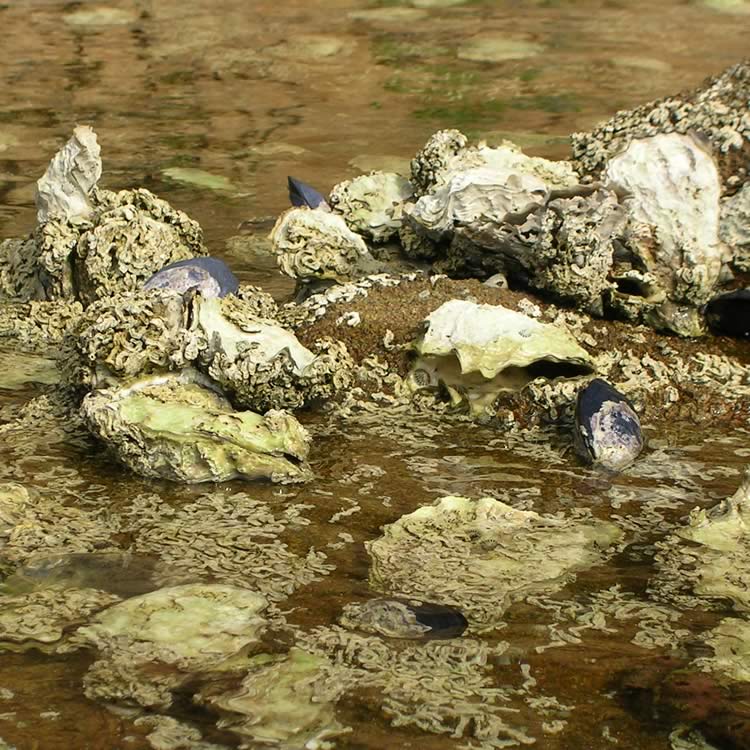Pacific oyster

Community type
Habitat type
Rocky reefs, kelp beds and inter-tidal zone
Originally from Japan, Pacific oysters were introduced to Australia in the 1940s for aquaculture farming. They are now extremely abundant in the Derwent Estuary, as in many other urban bays and estuaries around southern Australia. While they prefer to live in the sheltered and moderately salty waters of estuaries, Pacific oysters are tolerant of a wide range of temperatures, and live from the intertidal zone down to 40 m.
Oysters produce a cement which they use to attach themselves to hard surfaces and even other oysters. Unable to move from their home, oysters cannot hunt for food like other animals. Instead, they suck water into their shells and filter out the tiny plants and animals they find. To find enough food, oysters may filter up to 15 litres of water in an hour!
Filter feeding animals benefit other marine animals by cleaning the water. When it comes to breeding, oysters have the amazing ability to change between male and female, depending on how much food is available and how many other oysters are nearby. They use water temperature as the cue or trigger to breed, and a female oyster can release up to 200 million eggs in one spawn!
